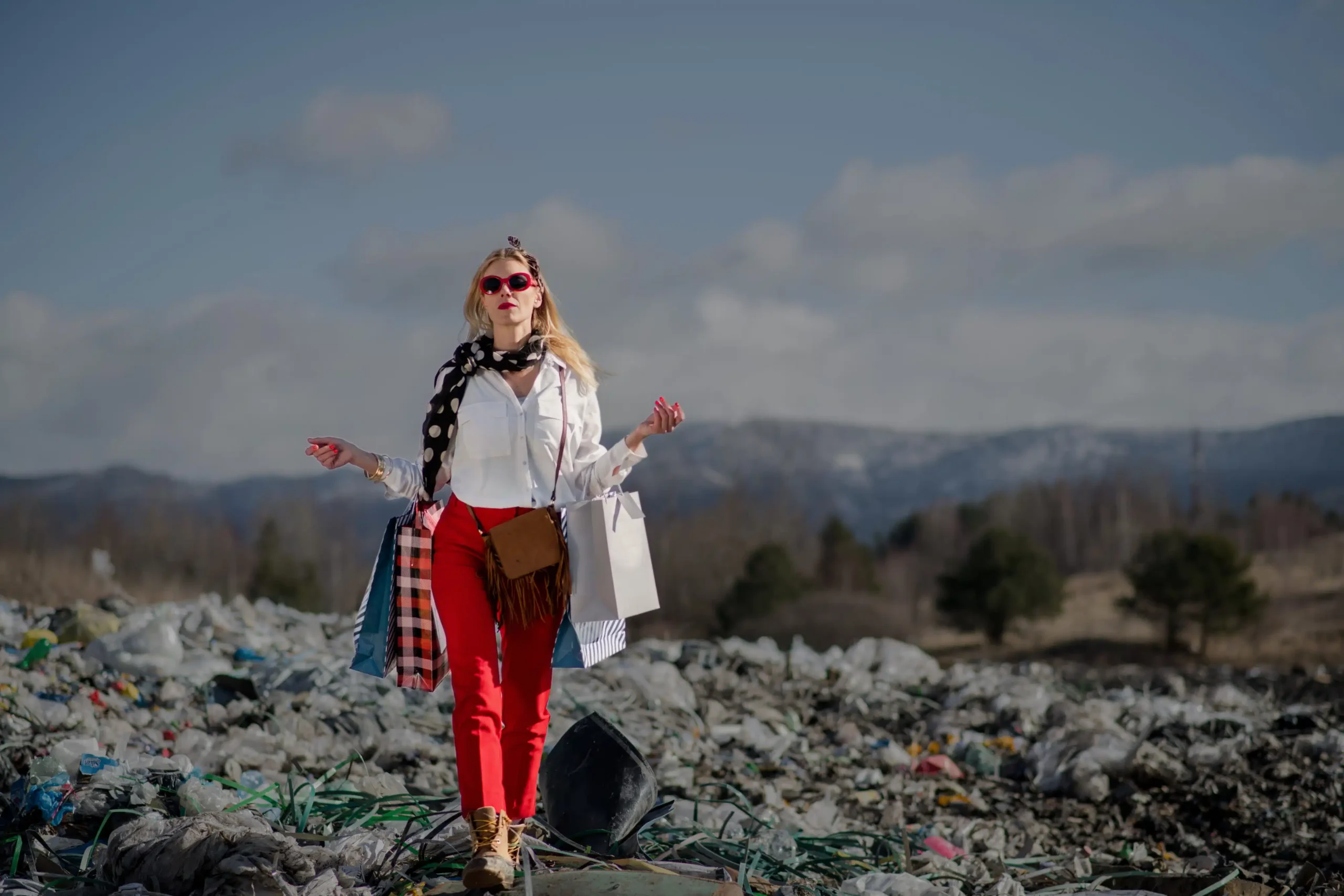Introduction to Fast Fashion
Fast fashion has become a buzzword in recent years, synonymous with trendy clothes at rock-bottom prices. It’s hard to resist the allure of affordable styles that seem to change overnight. With just a click or a quick trip to your local store, you can refresh your wardrobe without breaking the bank. But have you ever paused to consider what lies beneath those cheap price tags?
As consumers, we are often blinded by vibrant marketing and fleeting trends while ignoring the hidden costs associated with fast fashion brands. From environmental degradation to social injustices, this industry is leaving behind a trail of destruction that’s hard to ignore. It’s time for us all to take a closer look at how our shopping habits impact not only our closets but also our planet and its people. Let’s dive into the true cost of fast fashion and explore why it’s crucial for us to rethink our choices before making that next purchase.
The Environmental Impact of Fast Fashion
Fast fashion is a major contributor to environmental degradation. The rapid production cycles lead to enormous waste, with millions of tons of clothing ending up in landfills each year. These garments often contain synthetic materials that take decades to decompose.
Water pollution is another serious concern. The dyeing and finishing processes for cheap apparel release harmful chemicals into waterways, affecting aquatic life and local communities. Rivers can turn toxic, harming ecosystems that have thrived for centuries.
Additionally, the fast fashion industry consumes vast amounts of water—over 2,700 liters are needed to produce just one cotton shirt. This immense usage strains already scarce water resources in many regions worldwide.
Carbon emissions from manufacturing facilities also contribute significantly to climate change. Fast fashion brands prioritize speed over sustainability, fostering an industry where profits trump planetary health at every turn.
The Social Implications of Fast Fashion
Fast fashion isn’t just an environmental issue; it’s a social one too. The industry thrives on low labor costs, exploiting workers in developing countries. Many employees face grueling hours and meager wages, often violating basic human rights.
Children are not exempt from this cycle either. Some fast fashion brands rely on child labor to keep production costs down, sacrificing education and safety for profit margins.
Beyond the workers, consumers also bear the weight of these trends. Fast fashion encourages a throwaway culture where clothing is seen as disposable rather than durable. This mindset reinforces unsustainable habits that affect society’s values regarding consumption.
Moreover, local artisans struggle to compete with mass-produced items at rock-bottom prices, pushing traditional crafts toward extinction. Each time we buy into trendy garments from fast fashion brands, we contribute to this cycle—one that prioritizes profits over people and communities worldwide.
The Hidden Costs of Cheap Clothing
Cheap clothing often comes with unexpected costs that go beyond the price tag. Many fast fashion brands prioritize low prices over ethical production practices. This leads to exploitative labor conditions for workers, who are often paid meager wages and forced to work in unsafe environments.
Moreover, the quality of these garments is frequently compromised. Low-quality materials wear out quickly, leading consumers back to stores sooner than they expect. This cycle encourages a throwaway culture that fills landfills with discarded clothes.
The environmental toll is significant too. The process of producing cheap clothing consumes vast amounts of water and energy while releasing pollutants into our ecosystems.
Each piece may seem like a bargain at first glance, but when considering the broader implications on society and the planet, those savings come at a steep price we can no longer ignore.
How We Can Make a Difference
Making a difference starts with awareness. Educating ourselves about the true costs of fast fashion is crucial. Understanding how our choices affect the environment and communities can shift our buying habits.
Consider supporting local businesses that prioritize sustainability. These brands often use ethical practices and eco-friendly materials, reducing waste and pollution.
Also, think twice before purchasing trendy items. Ask yourself if you will wear it more than a few times. This mindset helps reduce impulse buys that contribute to the fast fashion cycle.
Engaging in clothing swaps or thrift shopping is another way to extend the life of garments. It’s fun to find unique pieces while minimizing environmental impact.
Advocate for change within your social circles. Share information on sustainable practices and encourage friends to make mindful fashion choices too. Every small action counts towards creating a significant impact.
Sustainable Alternatives to Fast Fashion
Sustainable alternatives to fast fashion are more accessible than ever. Brands focusing on eco-friendly practices have emerged, offering stylish choices without the environmental toll.
Thrift shopping is a fantastic way to revive your wardrobe. Vintage pieces often come with unique character and stories that new clothes lack. Plus, it’s budget-friendly and reduces waste.
Another option is investing in ethical brands that prioritize sustainability. These companies use organic materials and fair labor practices, ensuring their impact is positive at every stage of production.
Renting clothing for special occasions has gained popularity as well. This allows you to enjoy trendy styles without contributing to the demand for mass-produced items.
Consider DIY projects or upcycling old garments. Transforming what you already own can spark creativity while minimizing your carbon footprint—an enjoyable way to embrace individuality and sustainability simultaneously.
Choosing Quality over Quantity for a Better Future
Choosing quality over quantity is essential for a more sustainable future. When we opt for well-made, durable clothing, we not only reduce waste but also support ethical production practices. Investing in fewer pieces that last longer means you won’t need to shop as frequently.
Fast fashion brands often prioritize rapid turnover and low costs at the expense of quality. This leads to garments that fall apart after just a few wears or wash cycles. By shifting our focus towards high-quality items, we can break this cycle and foster a more responsible approach to fashion.
Look for brands that emphasize craftsmanship and sustainability. Research their manufacturing processes, materials used, and labor conditions. Supporting these companies sends a clear message about what consumers value: longevity over fleeting trends.
It might take some time to adjust your shopping habits, but the benefits are significant. You’ll create a wardrobe filled with timeless pieces instead of disposable fashion items cluttering your closet.
Making conscious choices today will help pave the way for an eco-friendly tomorrow—one where style doesn’t compromise our planet’s health or social equity.










